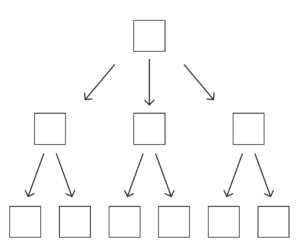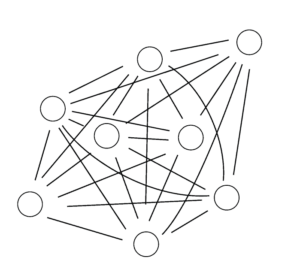Or: why Information & Energy need to flow freely…
Do you know those few, famous examples of extraordinary workplaces where people thrive… versus the Dilbert-like top-down hierarchies where people suffer or survive? I bet you do!
But how to turn such an energy-depleting hierarchy into a thriving, dynamic workplace? And, why would you even try? Well, most organizations must become more innovative, agile and change-responsive – if they want to survive, let alone thrive. And that is where dialog, organization development and culture come in.
Information & Energy
Most modern organizations operate in a complex, even volatile context (their outside influences) and they are becoming more complex systems (their inside-out influences).
As complex organizational systems, interacting with their context, organizations need everyone’s Information & Energy to process information from all directions, coordinate their collective energy and respond in time.
Dialog and Organization Development give space to this flow of Information & Energy – while the constraints of the top-down management paradigm and the organizational chart with its boxes only hinder information and energy.

 How to shake that off, how to get a little more loose and speed up, how to share information and energy more freely? How can we learn to trust the others and collaborate quicker in the organizational system….?
How to shake that off, how to get a little more loose and speed up, how to share information and energy more freely? How can we learn to trust the others and collaborate quicker in the organizational system….?
Culture contains Information & Energy
Over the course of the years, I developed this practical approach to organizational change: I start with culture as it creates the invisible field or container for information & energy. Culture often is the reason why change, OD and dialog don’t have the desired result.
Culture is our meanings, the context, our values, beliefs and how we do things around here.
When people become aware of culture they can start to shape it to better fit their needs. People quickly map their culture with the OCAI tool – scoring four archetypes of culture in the Competing Values Framework.
Next, we get together in small change circles (groups of trusted co-workers) to practice a dialog about culture and to balance those competing values (work overload versus fun, people versus profit, freedom versus standardization, and more…). That frees up a lot of information and energy!
While doing so, we learn the practice of dialog (and embed it in our culture) and we start to plan further organization development and implement changes in the organization. Starting to enrich culture with dialog may affect structure and procedures as well. Sometimes the organization decides to loosen the tight boxes on the chart to give people more space to follow their insights and energy. But that only happens when organizations and people have completed a whole journey – toward more trust (letting go of control) and more sharing of information and energy – while keeping a dialog going to coordinate their information & energy flows.
When they like it, they can keep the change circles as learning circles to continue the dialog and stay ready for change and adjustments.
The webinar recording entails:
- what’s dialog and culture and why do they matter?
- which are the 4 archetypes of culture and mindsets (“aha, this is how we think, feel and do things”)
- how to practice dialog and develop the organization in change circles; how & why they work, how to facilitate, using the archetypes as a vehicle for continuous dialog
“Fluid” – top image by Mark Chadwick
Marcella Bremer co-founded this blog and ocai-online.com. She’s an author and culture & change consultant.